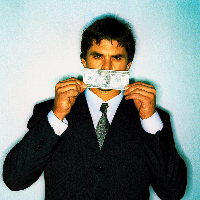By Dan Boudreau
Cashflow is the oxygen that brings your business to life. As surely as you cannot live without air, a business will grind to a halt if starved for cash.
A cashflow forecast will include estimates of sales and expenses, and enable you to clarify how much money you need to operate your business.
Here are seven secrets to building a rock solid forecast.
1. Research your market. The cashflow is an opportunity to increase your confidence in your business idea. The confidence arises from basing your estimates on reliable information. If you have done your homework, forecasting will be easy.
2. Provide an appropriate amount of detail. The first year is typically projected month by month. Subsequent years are usually annual totals, portraying any changes from the preceding year. For example, year two might show an increase of 20% over year one sales.
3. Project minimal sales. Most entrepreneurs are serial optimists, and this is often reflected in the financial projections. Optimism is a wonderful trait that a business owner should never leave home without, but when it comes to forecasting sales we need to take off the rose-coloured glasses and at least temporarily adopt a pessimistic view.
4. Inflate your expenses. Add in more than you think you’ll need to cover costs. A remarkable thing about expenses; they are almost always more than we are inclined to anticipate.
5. Include a slush fund. Once you have projected your expenses, add a little extra money into your forecast for unexpected costs. The higher the risk, the larger the contingency should be. If your rainy day fund isn’t used it becomes profit at the end of the year; if you need it during the year you’ll be thankful to have included it in your projections.
6. Use actual cash-in and cash-out times. Sales should be projected in the month during which the amounts are expected to enter your bank account, and expenses should be reflected in the month during which you plan to pay them.
7. Determine sustainability. The key to a realistic cashflow forecast is to assume minimal sales and maximum expenses. If you can show viability with conservative sales and slightly inflated expenses, your business will have a stronger chance of surviving and thriving.
Once you’ve entered all sales and expenses, the bottom line in each month of your forecast will show a black positive or red negative balance. While black ink in the bottom line of a cashflow warms the entrepreneurial heart, red can induce a bit of a blood pressure spike.
If the red ink can’t be eradicated by increasing sales or reducing expenses, it may indicate the need for an operating loan. Your cashflow forecast is the financial snapshot you will use to determine how much you will need to borrow to keep your business fueled with operating cash.
Copyrighted Material. All Rights Reserved.
